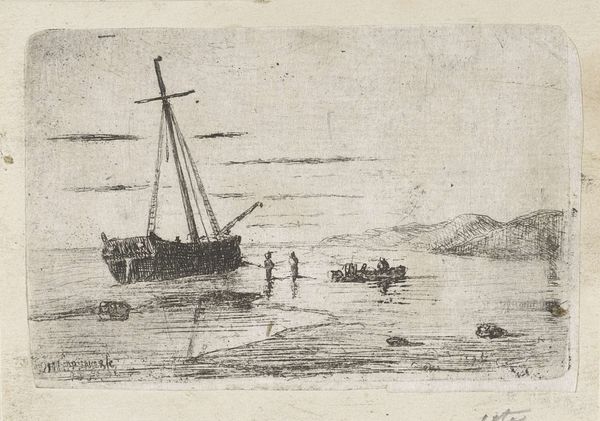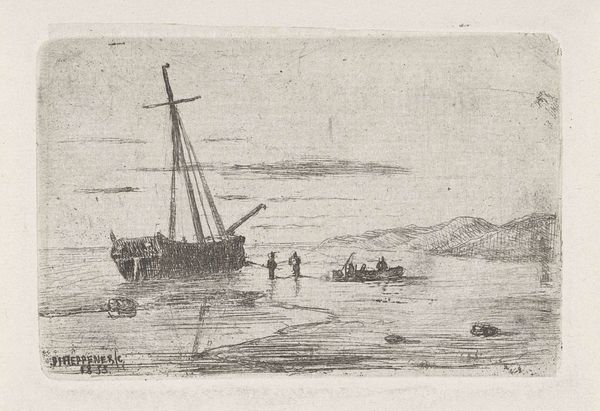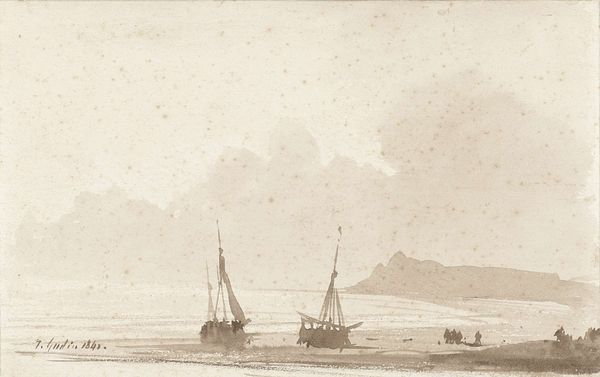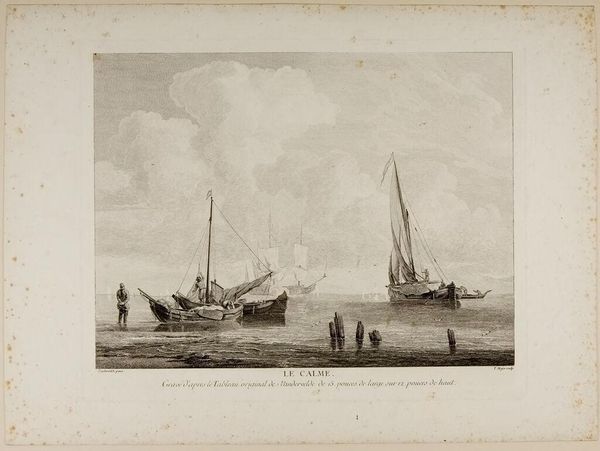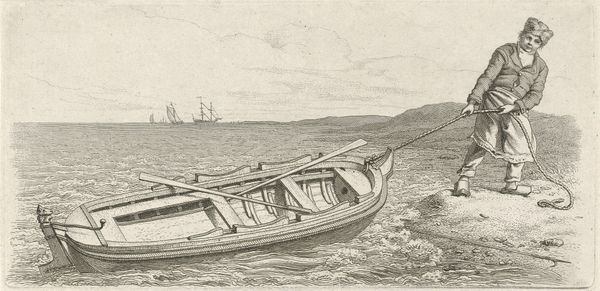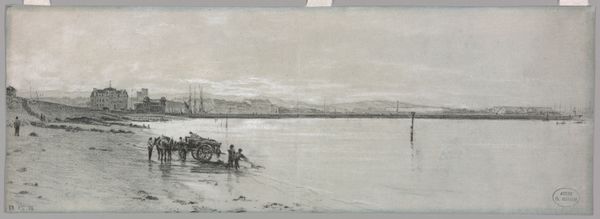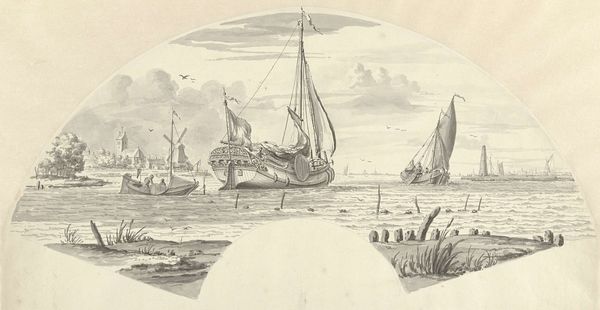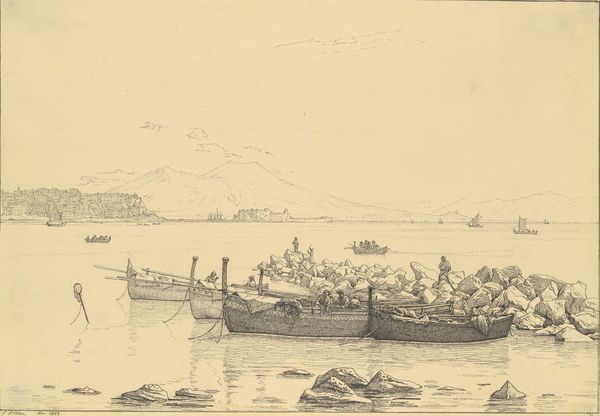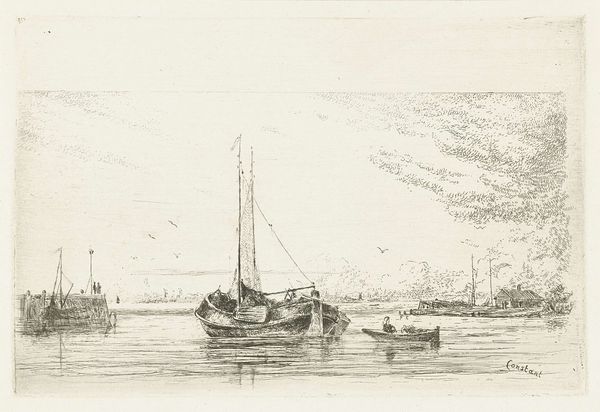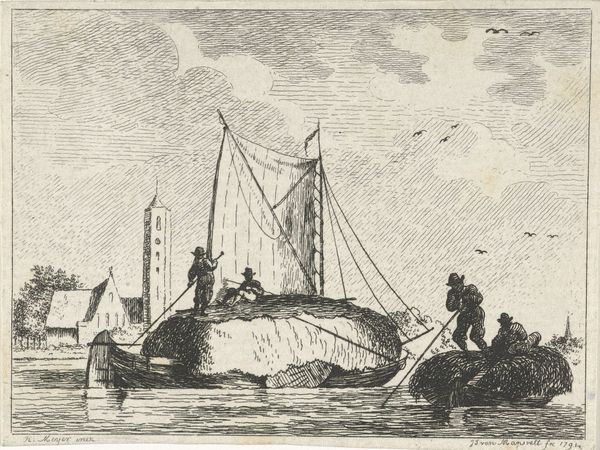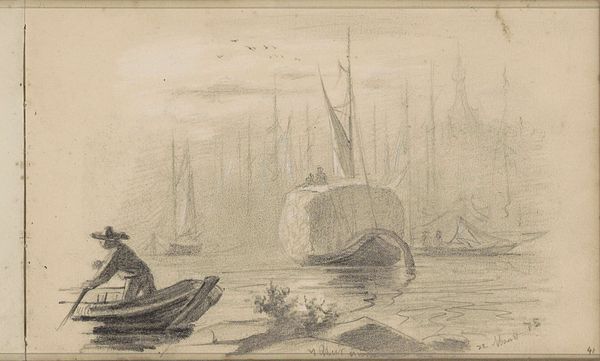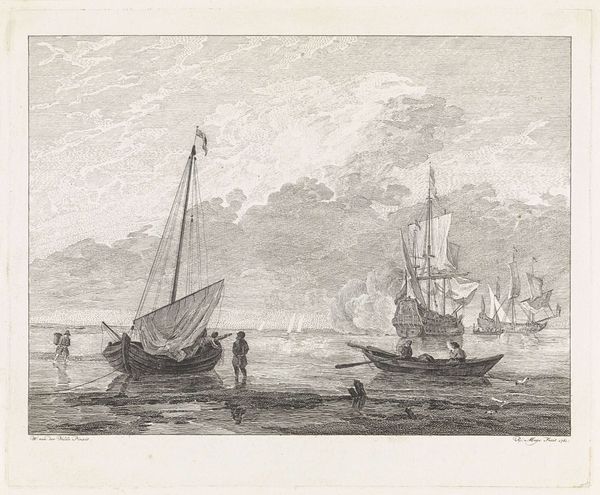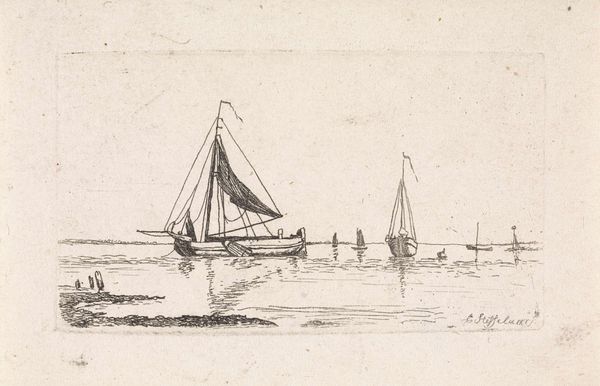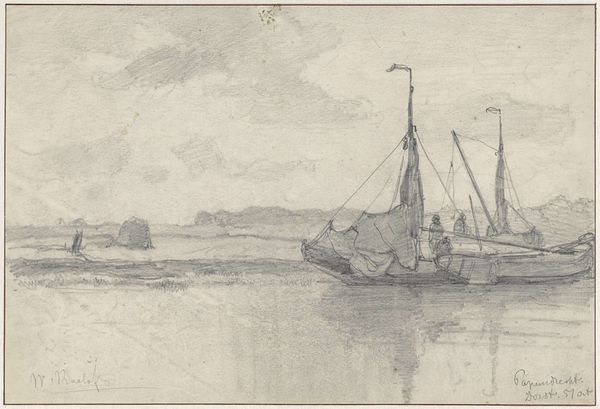
drawing, pen
#
drawing
#
landscape
#
pen-ink sketch
#
pen
#
realism
Dimensions: height 85 mm, width 183 mm
Copyright: Rijks Museum: Open Domain
Curator: Here we have Isaac Weissenbruch's "Drie aangelegde schepen met figuren aan het werk," created sometime between 1836 and 1912. It's a pen drawing showcasing docked ships, a classic example of Dutch Realism, now held here at the Rijksmuseum. Editor: You know, it looks incredibly tranquil. Almost like a visual lullaby. The textures created with the pen give it this gentle, watery feel. Even though it's just pen and ink, I feel like I can smell the salty air. Does that sound crazy? Curator: Not at all. Weissenbruch had a real knack for capturing atmosphere. Water, in art, has a deeply complex, historically recurring, symbolic role to play: here the pen work reflecting the sky gives this scene an incredible stillness— almost reflective, or indeed, meditative in its nature. Water has long played this role of calm reflection and even cleansing. Editor: Right, that makes total sense! Looking at the placement of the figures on the ships, they don't dominate. It's more like they're a part of the landscape itself. Curator: Precisely! They represent the daily rhythms, their intimate connection with the waterways as source of sustenance and trade, reflecting their rootedness. In Northern European painting, the placement of figures is very intentional, mirroring daily work while simultaneously suggesting a continuity between land and society. It reinforces an interdependent, reciprocal connection with nature. Editor: I like how it's not overtly dramatic, not trying to shock. It’s an honest glimpse into everyday life. Curator: Indeed. Weissenbruch aimed to portray the reality he observed, without embellishment, reflecting the social and artistic movements of the time. A slice of time presented as it existed; with realism often comes a search for some deeper form of truth. Editor: Makes you wonder about the stories those figures could tell. It reminds us to look deeper, and be aware of what daily activities are, perhaps not overtly celebrated as glamorous; but worthy of documentation all the same. Curator: Exactly. Art exists in the mundane just as powerfully as it does in the sublime. Weissenbruch masterfully reminds us of this through subtle realism. Editor: A very calm note on which to pause and reflect then.
Comments
No comments
Be the first to comment and join the conversation on the ultimate creative platform.
